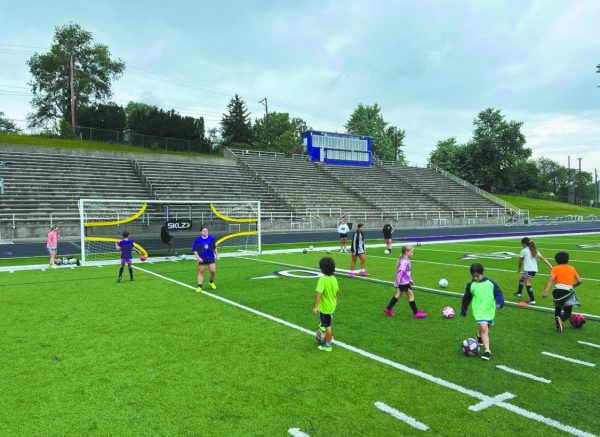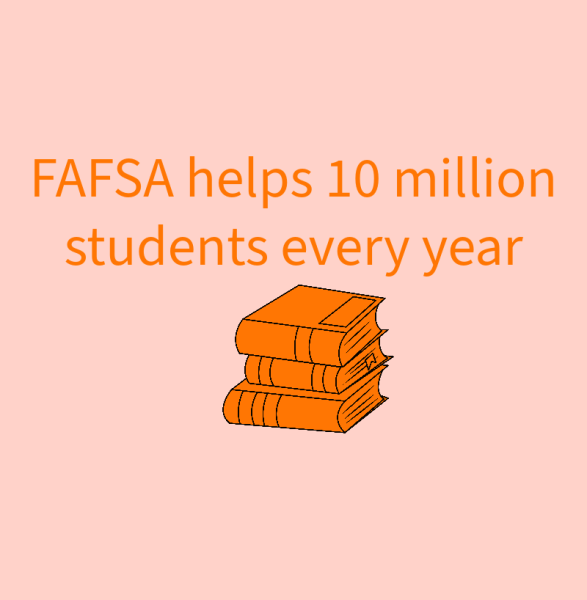Chronic absenteenism impacting students in school and solutions
Rylee Craig Editor In-Chief
December 19, 2022
Chronic absenteeism within students is a huge problem that many schools have to deal with. When a student becomes chronically absent from school, it is when they are absent for at least 10% or more days of school for any reason.
According to the US Department of Eduaction, one in six students in the US miss enough school to be considered chronically absent. Here at East, when a student misses 28 days or more they are considered chronically absent.
The Nebraska Department of Education says that 23% (77,000) of Nebraska high school students were considered chronically absent for the 2021-2022 school year. Compared to just Bellevue Public Schools, according data from the distric, Rodney Brown Director of Student Services says, during the 2021-2022 school year 2.6% (79) of high school students had 18 or more absences, some being considered chronically absent.
Once a student becomes chronically absent or misses a large amount of days, then many plans of action are taken. One of those plans being attendance improvement plans involving teachers, deans, counselors, and administrators. Along with the students and their families, are all a part of the process.
When a student starts missing a large amount of school, what usually happens first are referrals to the deans. Here at East, 1/3 of all referrals for behavior involve attendance, such as tardies, skips, or truancies. Of the 49 days that were in the first quarter of the 2022-2023 school year, students attended an average of 80.2% of those days, or they missed 9.7 days so far.
Many plans of action are then taken to try and solve poor student attendance. Each year the district gathers data relating to students being absent and uses this information for other plans of actions to try and decrease the amount of students chronically absent. Brown says that attendance data is frequently used by school attendance teams when identifying students that would benefit from additional support and are frequently gathered and analyzed at both the district and school level to try and make solutions.
“Administrators, school counselors and school social workers are instrumental in improving attendance and conduct both formal and informal communication with parents/guardians to encourage regular attendance. Formal meetings, which are also called “collaborative plan meetings’’ involve a team approach to work with parents/guardians to reduce the barriers to regular attendance,” Brown said.
Another form of solving poor student attendance early on are the letters that students’ parents/guardians receive. These letters are sent home when a student misses an accumulative of 8, 13, and 18 days of school.
These letters were updated two years ago to also indicate the number of hours a student has missed. They did this in the hopes that parents and guardians are also aware of the total number of missed instructional hours.
“These letters emphasize the importance of regular attendance and how attendance impacts a student academically,” Brown said.
Another plan of action the district follows is the GOALS program. This program works with families in their homes to reduce barriers that negatively affect attendance. After all of the plans of action have been attempted and a student still misses 28 days or more, students and their families can then turn to court. Dean Blake Anderson says that students can be determined by a county attorney and can file for a court case at the Sarpy County Attorney’s office.
There can be many reasons that students become chronically absent from school. After talking with students themselves, most came to the conclusion that being unmotivated due to mental health struggles is one of the biggest reasons. Senior Michael Duros shares his thoughts on what being unmotivated for school looks like for him.
“What makes me usually feel unmotivated for school is dealing with depression and my lack of time management skills. Because of those things, it causes me to want to skip school and give up on my classes very quickly,” Duros said.
On top of personal struggles students may be going through, as well as the stress of school, especially if a student is chronically absent, it may be really hard to motivate students to get caught up. Duros explains what he does to try and motivate himself for school.
“I try to do homework in other places rather than my home and school often because there are too many distractions in both of those places. I enjoy going to coffee shops where you are more inclined to get work done and feel more accomplished while doing it, Duros said.
The many struggles that come with being a teenager, including mental health issues, can have a huge impact on student attendance and performance in the classroom. Duros says that because of that he has failed more classes in the last two years then in his entire education career.
“I wish the schools cared more about student health, mental and physical, rather than just focusing on getting a letter grade based off of a curriculum that is designed to ‘work best for everyone’ when in reality no one is the same and we all need different things in order to be successful,” Duros said.
![Ensuring safety. If given a reason, the school resource officer reserves the right to search a student’s belongings. As a safety precaution, SROs wear gloves when searching a student’s backpack. “So [for a] backpack search, if we have to do a backpack search, we have to have a few things. We have to have existent circumstances, probable cause, or we have to have reasonable articulable suspicion which we would request from the school administrator or teacher to search a backpack,” School Resource Officer Jonathan Hobbs said.](https://thechieftainspear.org/wp-content/uploads/2024/05/hobbs-photo-Medium-450x600.jpeg)











